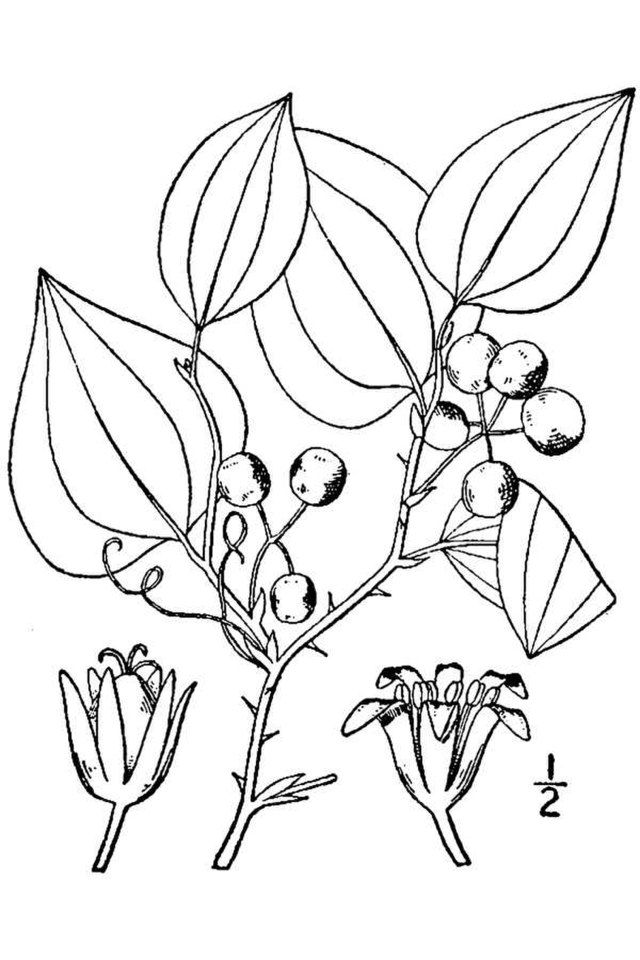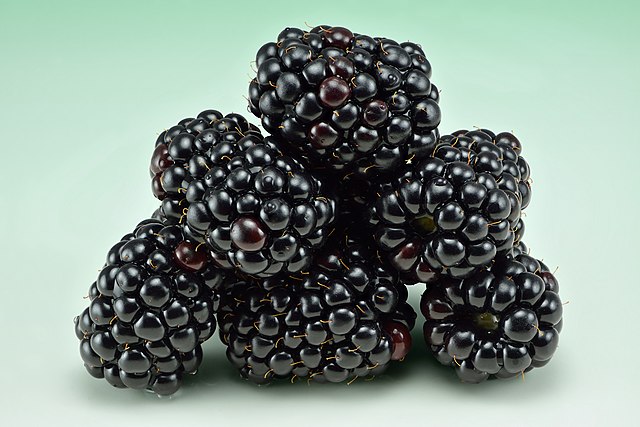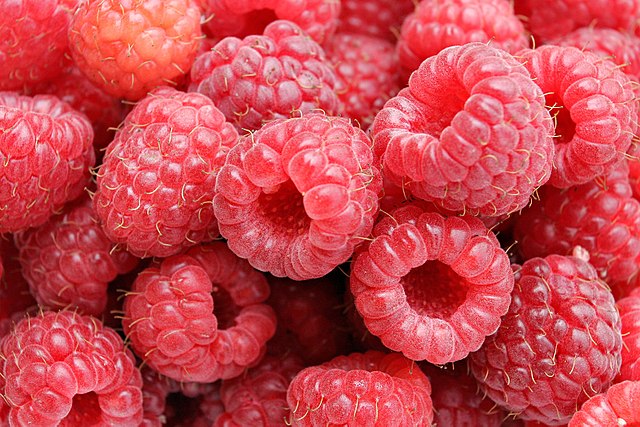
We all remember the children’s story of Peter Rabbit and his escapades. How he would escape the wrath of Mr. McGregor’s hoe by running into the nearby briar patch. So, the question remains, what is a briar patch? Many of us have walked through the woods and have been cut by thorny looking branches or have gotten tangled up and had your pants or shirt ripped or torn by these nasty things. It could have been Greenbriar (Smilax sp.) with its needle-like thorns and steel-like vines or multi-flora rose that will reach and grab you with its jagged thorns as you walk by. But more than likely it was one of the Rubus species, Blackberries or Raspberries. So how do we tell the difference?
Blackberry (Rubus allegheniensis) and Black raspberry (Rubus occidentalis) are both native to North America – the Blackberry to the Pacific northwest and the Black raspberry to the northeast region. Both were staple foods for Native Americans and an extremely important part of the food chain for mammals and birds. Let us begin with the leaves. The overall leaf shape is quite similar. Both have compound leaves with 3-5 leaflets per leaf. Both sets of leaflets have pinnate venation and serrated margins. However, there is one significant difference between them. Turn the leaf over and look at the underside of their leaves; although the underside of Blackberry’s leaves is lighter than their upper side, the Black raspberry leaves are markedly lighter. They look almost white.

Next, let us study the stems (or canes) of each plant. Both plants have leaves which alternate along the thorny stems. The Black raspberry stems are notably bluish white. Another difference can be seen in a closer view of the stems. The Blackberry stems have ridges and angles while the Black raspberry stems are smoothly round-shaped, nearly circular in diameter.
Each plant’s thorns are different. Blackberry thorns are heavy-duty and very similar to multi-flora rose. Black raspberry thorns are somewhat less challenging,due to their smaller overall size and more hairlike in appearance.
The flowers are similar in appearance and so is the developing fruit. As the fruit begins to ripen, both appear reddish in color before turning a deep purple, almost black, hence the name. The fruit of Black raspberries are smaller than Blackberries and covered with very small hairs. Blackberries are usually larger, with bigger “cells.” The cells are where the seed is located. Blackberries are sometimes described as shinier than black raspberries. Black raspberries are harvested earlier than blackberries and can also handle the cold better. However, the easiest way to tell the difference is to pick one! If you look at the core of the individual berry, where the stem attaches to the berry. Blackberries will always have a white core, whereas black raspberries are hollow in the center. It is that easy!

The two fruits also have a different flavor profile, with blackberries being more tart, while black raspberries are sweeter. But now you ask, what about Red Raspberries? They too are members of the Rubes family but are native to Europe and Northern Asia. Raspberries are sweeter, especially the Red varieties, and all Raspberries have similar growth characteristics. The fruit industry has developed several varieties of Red Raspberries for commercial production. You now can eat fresh Red Raspberries all year long thanks to the many cultivars that have been developed.
But now you ask, what about dewberries, boysenberries, gooseberries, and salmon berries? Well, that is a whole different briar patch. Peter Rabbit cannot give away all his secret hiding places.














